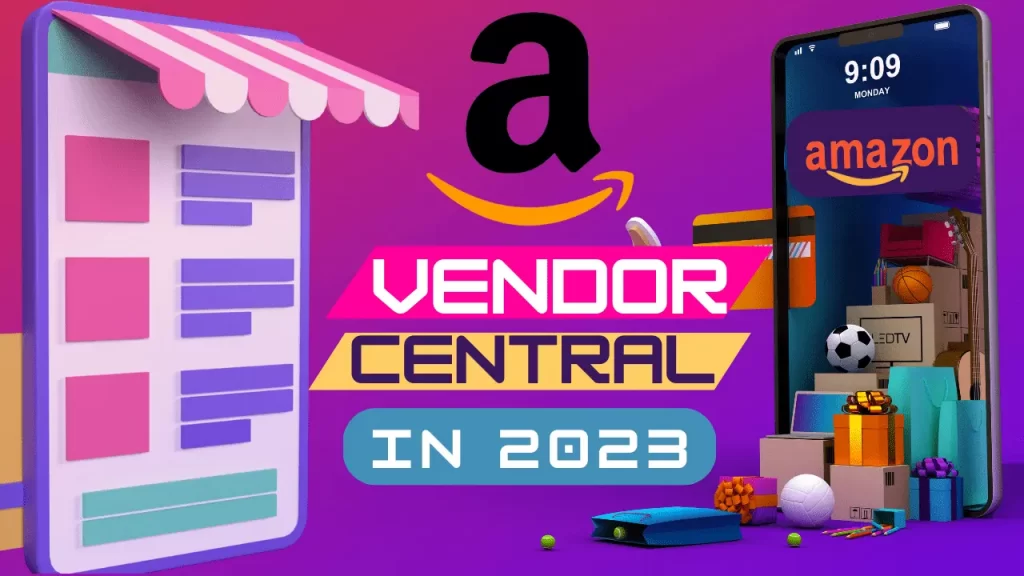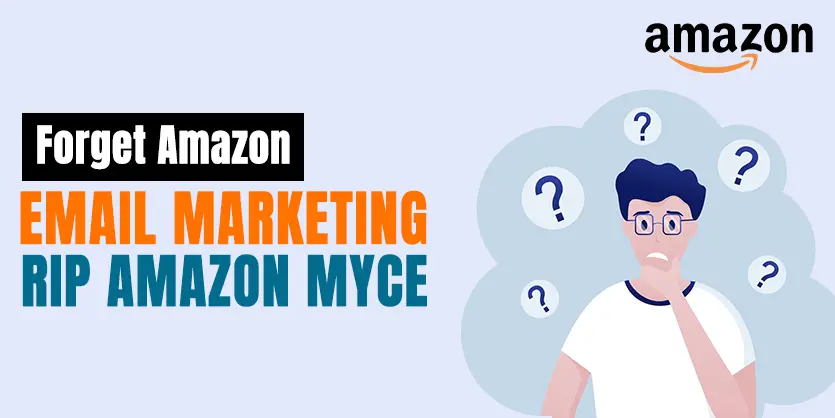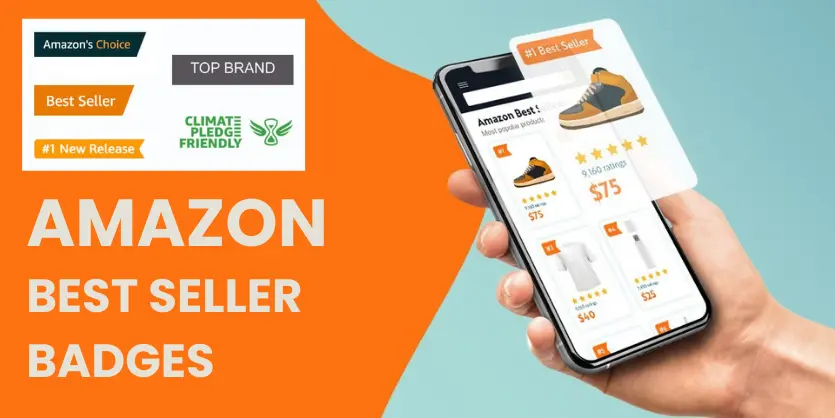In today’s digital age, e-commerce has revolutionized the way businesses operate, and one platform stands out as a global powerhouse: Amazon. With its vast customer base and unparalleled reach, Amazon offers immense opportunities for businesses to expand their online presence and increase sales.
If you’re a brand or manufacturer looking to harness the power of Amazon’s vast marketplace, understanding and utilizing Amazon Vendor Central is crucial.
Amazon Vendor Central serves as a dedicated platform for brands and manufacturers to collaborate directly with Amazon as suppliers. Amazon Vendor Central is designed to empower brands and manufacturers. Unlike Amazon Seller Central, where sellers act as third-party sellers and handle inventory management, shipping, and customer service themselves, Vendor Central takes a different approach.
In this blog, we will cover:
What is Amazon Vendor Central?
Advantages of Amazon Vendor Central
How to Join Amazon Vendor Central?
How does Amazon Buy Your Products on Vendor Central?
Pros and Cons of Selling Directly to Amazon
Selling Programs in Amazon Vendor Central
Tips for Success on Amazon Vendor Central
What is Amazon Vendor Central?
Amazon Vendor Central is an invitation-only platform provided by Amazon for brands and manufacturers to sell their products directly to Amazon. Unlike Amazon Seller Central, where sellers act as third-party sellers and handle inventory management, shipping, and customer service themselves, Vendor Central takes a different approach.
When a brand or manufacturer becomes a vendor on Amazon Vendor Central, they sell their products wholesale to Amazon. In this model, Amazon acts as the retailer, purchasing products in bulk from vendors and taking care of various aspects of the selling process. These include inventory management, order fulfillment, shipping, and customer service.
Vendors ship their products in bulk to Amazon’s fulfillment centers, where Amazon takes over the responsibility of storing the inventory and handling the logistics. When customers place orders for vendor products on Amazon’s marketplace, Amazon fulfills the orders and provides customer support on behalf of the vendors.
Through Amazon Vendor Central, vendors gain access to a broad customer base on Amazon, including millions of active shoppers who trust and rely on the platform for their online purchases. Vendors can take advantage of various marketing tools provided by Amazon, such as sponsored product advertising, A+ content, deals & coupons, AND and other programs such as Amazon Vine to enhance product visibility and attract more customers.
Advantages and Disadvantages of Joining Amazon Vendor Central
There are several advantages to using Amazon Vendor Central for brands and manufacturers. With Amazon Vendor Central, companies can become Amazon’s suppliers and sell their products to Amazon. In this way, Amazon takes care of selling, promoting, and delivering the products to the final consumer. Usually, products that are sold in this way are labelled as “Sold by Amazon”, which can be a sign of confidence for many consumers. Here are some key benefits:
Direct Partnership with Amazon: Being a vendor on Amazon Vendor Central means establishing a direct relationship with Amazon as a trusted partner. This can lead to increased visibility and credibility for your brand, as well as opportunities for growth and collaboration.
Convenience and Operational Efficiency: One of the significant advantages of Vendor Central is the convenience it offers. Amazon takes care of inventory storage, order fulfillment, shipping, and customer service on your behalf. This allows you to focus on other critical aspects of your business, such as product development, marketing, and expanding your brand.
Access to Amazon’s Massive Customer Base: Amazon has a vast customer base, with millions of active shoppers regularly visiting the platform. By becoming a vendor, you gain immediate access to this large and diverse customer pool. This can significantly expand your brand’s reach and increase sales potential.
Enhanced Marketing Opportunities: Vendor Central provides various marketing tools to help you promote and showcase your products effectively. These tools include sponsored product ads, A+ content, deals, and coupons. Leveraging these marketing features can boost your product visibility, drive traffic, and attract more customers.
Potential for Increased Sales: With access to Amazon’s customer base, enhanced visibility, and marketing tools, vendors on Vendor Central have the potential to increase their sales significantly. Amazon’s trusted platform and customer loyalty can help build credibility and trust in your brand, ultimately driving more conversions and sales.
Valuable Insights and Data: Vendor Central provides access to detailed sales data and analytics, giving you insights into your products’ performance. This data can help you make informed business decisions, identify trends, optimize your product offerings, and refine your marketing strategies.
Collaborative Relationship with Amazon: As a vendor on Vendor Central, you’ll typically have an assigned Amazon account manager. This account manager can offer guidance, support, and strategic advice to help you succeed on the platform. Collaborating with your account manager can lead to better product placement, promotional opportunities, and overall growth.
It’s important to note that the advantages may vary depending on factors such as your product category, the competitiveness of the market, and your brand’s overall strategy. Nonetheless, Amazon Vendor Central offers numerous benefits for brands and manufacturers looking to establish a strong presence and drive sales on the Amazon platform.
How to Join Amazon Vendor Central?
Becoming an Amazon Vendor isn’t as easy as setting up an account with Seller Central. As I mentioned earlier, it’s an invitation-only platform. You can’t simply apply; you need an invite from Amazon first. Amazon has a global vendor recruitment team that searches for new brands and products to sell. Generally, these recruiters look for:
Sellers with high sales on Seller Central.
Marketplace sellers with popular products.
Exhibitors at trade shows and fairs with interesting products.
If Amazon is interested in what you’re selling, you’ll get an email inviting you to join Vendor Central. The team will explain how the process works and the terms of business. Once you agree to the terms, you’ll get access to a Vendor Central account, and you can start supplying Amazon directly.
How does Amazon Buy Your Products on Vendor Central?
When you become a vendor on Amazon Vendor Central, Amazon buys your products directly from you at wholesale prices. Here’s an overview of the process:
Purchase Orders (POs): After negotiating the terms and contracts, Amazon will start placing purchase orders (POs) for your products. These POs detail the number of products Amazon wants to purchase, the agreed-upon price, and other relevant information.
Shipping and Delivery: As a vendor, you’re responsible for shipping the ordered products to Amazon’s designated fulfillment centers. Amazon will provide instructions regarding the shipping process, including labeling requirements and delivery timelines.
Receiving and Inventory Management: Once your products arrive at Amazon’s fulfillment centers, they will be received and processed by Amazon’s logistics team. The inventory will be stored in Amazon’s warehouses until customer orders are placed.
Order Fulfillment: When a customer purchases your product on Amazon’s marketplace, Amazon handles the order fulfillment process. They pick, pack, and ship the product to the customer’s address. The packaging and shipping process is managed by Amazon’s logistics network, ensuring timely and efficient delivery.
Payment: After the products are successfully delivered to customers, Amazon will pay you for the products sold based on the agreed-upon payment terms. Payment can be made in various ways, such as bank transfers or other payment methods specified in your contract with Amazon.
What are the pros and cons of selling directly to Amazon?
With anything, there are pros and cons. Becoming a vendor on Amazon has its upsides but it also has some downsides. Let’s go over both!
Pros:
Profits: Sell your products at a profitable wholesale price to Amazon.
Labeling: Your listings will show as “Ships From and Sold by Amazon.com.”
Customer service: All customer service and returns are handled by Amazon.
Increased sales: Sales may increase as Amazon will have control over the listing.
Hands-off: You don’t need to worry about running an Amazon business.
Cons:
Invite-only program
Fees: Additional fees, including co-op fees, marketing fees, remittance fees, freight allowance fees, and chargebacks, can total up to 25%.
Margins: Smaller margins than if you were to sell the product directly to consumers through Seller Central: Amazon will likely negotiate the purchase price of your products, leaving you with a smaller margin.
Pricing: You have no control over your pricing, which can be a bad thing if you have MAP (minimum advertised price) pricing agreements with other retailers.
Lack of control: You won’t have much control over your listings and inventory.
Payment structure: Amazon’s payment terms can be 30, 60, or 90 days; this may cause cash flow issues for your business.
Selling Programs in Amazon Vendor Central
Amazon Vendor Central offers several selling programs to cater to different types of brands and manufacturers. Here are some of the key selling programs available within Amazon Vendor Central:
Wholesale: The Wholesale program is the most common selling program on Amazon Vendor Central. Brands sell their products to Amazon at wholesale prices, and Amazon takes care of inventory management, order fulfillment, and customer service. This program is suitable for brands looking to sell their products in bulk to Amazon and leverage Amazon’s resources and customer base.
Vendor Express (Discontinued): Vendor Express was a program that allowed smaller brands and startups to sell directly to Amazon. However, as of May 2018, Amazon has discontinued the Vendor Express program, and existing sellers have been migrated to other programs like Vendor Central or Seller Central.
Vendor-Powered Coupons: This program allows vendors to create digital coupons for their products. These coupons can be applied by customers at the time of purchase, providing them with discounts or other promotional incentives. Vendor Powered Coupons can help increase product visibility, attract more customers, and drive sales.
Vendor Central Small and Light: This program is specifically designed for small and lightweight products. It offers reduced fulfillment fees and faster shipping options for eligible products, making them more competitive in terms of pricing and delivery speed.
Vendor Central EDI (Electronic Data Interchange): EDI is a program within Vendor Central that enables brands to integrate their systems with Amazon’s systems for seamless data exchange. It streamlines the ordering, invoicing, and inventory management processes, improving efficiency and accuracy.
Vendor Central Direct Fulfillment (Dropship): Direct Fulfillment allows vendors to fulfill customer orders directly from their own warehouses or third-party logistics providers. This program offers flexibility in terms of inventory management and fulfillment, as vendors can ship products directly to customers while still being part of Amazon Vendor Central.
Tips for Success on Amazon Vendor Central
Optimize Product Listings: To maximize your product’s visibility and improve search rankings, it’s crucial to optimize your product listings. Craft compelling and keyword-rich product titles, detailed and accurate descriptions, and visually appealing images that highlight your product’s features and benefits. By aligning your listings with Amazon’s search algorithm, you increase the chances of attracting potential customers.
Monitor Sales Performance and Metrics: Regularly monitor your sales performance and metrics within Vendor Central’s dashboard. Pay attention to key indicators such as sales volume, customer reviews, inventory levels, and product rankings. Analyzing this data will provide valuable insights into your products’ performance and help you identify areas for improvement or opportunities for growth.
Collaborate with Your Amazon Account Manager: As a vendor on Amazon, you’ll be assigned an account manager who can be an invaluable resource for your business. Building a strong relationship with your account manager and maintaining open lines of communication can lead to collaborative efforts in optimizing your product listings, resolving issues promptly, and exploring promotional opportunities tailored to your brand.
Amazon Vendor Central vs Amazon Seller Central
Amazon Vendor Central and Amazon Seller Central are two distinct platforms offered by Amazon for selling products, and they cater to different types of sellers. Here’s a comparison of the key differences between the two:
Amazon Vendor Central:
Invitation-only: Amazon Vendor Central operates on an invitation-only basis. Brands and manufacturers are selected by Amazon to become vendors, usually based on factors such as product quality, brand reputation, market demand, and suitability for the platform.
Wholesale Model: As a vendor on Amazon Vendor Central, you sell your products wholesale to Amazon. Amazon purchases products from you at a negotiated wholesale price and takes care of inventory management, order fulfillment, shipping, and customer service.
Amazon as the Retailer: In the Vendor Central model, Amazon acts as the retailer, selling the products to end customers on its marketplace. Vendors do not have control over pricing and are subject to Amazon’s retail pricing decisions.
Marketing and Promotions: Vendors on Vendor Central have access to various marketing tools provided by Amazon, such as sponsored product ads, A+ content, deals, and coupons. These tools help vendors promote their products, enhance visibility, and drive sales.
Amazon Seller Central:
Open to All Sellers: Amazon Seller Central is open to all sellers, including individuals, small businesses, and large enterprises. Sellers can sign up and start selling on Amazon’s marketplace without needing an invitation.
Individual or Professional Seller Account: Seller Central offers two types of accounts – Individual and Professional. Individual accounts are suitable for sellers with a low sales volume, while Professional accounts cater to higher-volume sellers. Each account type has different fee structures and access to certain features.
Fulfillment Options: Sellers on Seller Central have the flexibility to choose between two fulfillment options: Fulfillment by Amazon (FBA) or Fulfillment by Merchant (FBM). With FBA, sellers send their inventory to Amazon’s fulfillment centers, and Amazon handles storage, packing, shipping, and customer service. With FBM, sellers fulfill orders themselves and handle all aspects of the logistics.
Pricing Control: Sellers on Seller Central have more control over their pricing strategy. They can set their own prices and adjust them as needed to be competitive in the marketplace.
Monthly Subscription and Referral Fees: Professional sellers on Seller Central are required to pay a monthly subscription fee, in addition to referral fees on each item sold. Individual sellers do not pay a monthly fee but have higher referral fees per item sold.
Both Vendor Central and Seller Central offer unique benefits and cater to different selling needs. The choice between the two depends on factors such as business size, operational preferences, pricing control, and the level of support and services desired by Amazon.
To conclude, Amazon Vendor Central offers an excellent opportunity for brands and manufacturers to expand their reach and tap into Amazon’s vast customer base. By taking advantage of the platform’s convenience, marketing tools, and the expertise of your Amazon account manager, you can position your brand for success. Remember to optimize your product listings, monitor your performance metrics, and continually strive for excellence to achieve long-term growth and profitability on Amazon Vendor Central.
We tried to expailn all the important elements to help you understand the Amazon Vendor Central. If you have any queries about Amazon Vendor Central, please let us know through the comment box or email us at the following email address: info@ecomclips.com
To know more about Amazon, please check out our other blog. Also, you can check our YouTube videos related to Amazon.
Minimum Advertised Price MAP Policy for Amazon Sellers
Amazon New Update 2023
Drive Amazon External Traffic with Canonical URL
Amazon FBA Reimbursements for Lost items
Automate Your Shopify Store with Amazon MCF 2023
How to Set up Coupons on Amazon 2023
Organic Keyword Ranking Guide for Amazon with PPC Advertising
Complete Overview of Amazon Seller Badges 2023



